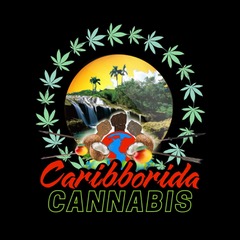
By Roddrick Taylor Certified Ganjier
Delta 8 THC, is one of over one hundred cannabis compounds found in some cannabis sativa cultivars. The Delta 8 THC compound shows up in small amounts in some THC cannabis cultivars. Delta 8 THC has a double bond on the eighth carbon atom of the chain. Delta 9 THC has a double bond on the ninth carbon atom of the chain. Delta 8 THC is a lighter version of Delta 9 THC. Delta 8 THC appears in small amounts in certain cannabis sativa plants and is slowly becoming prevalent in even smaller amounts in CBD Hemp plants due to hybridization. Delta 8 THC is extracted from the cannabis sativa plants and isolated. Delta 8 THC, has been used on children with cancer as a relief aid; as well as increase their appetites after chemotherapy. Delta 8 THC, is psychoactive, but not as intoxicating as Delta 9 THC, so it is perfect for those patients with a low THC cannabinoid tolerance. It must be noted that once a cannabinoid is isolated from a cannabis plant, it will not provide the full therapeutic composition. Currently, most Delta 8 THC is CBD with a synthetic solution.
Isolating and extracting the Delta 8 THC from a cannabis plant is not the only way the Delta 8 THC molecular structure can be derived:

Converting CBD (cannabidiol) into delta-8 THC (delta-8 tetrahydrocannabinol) is a chemical process that involves modifying the molecular structure of CBD to create a different compound. Delta-8 THC can be produced from CBD through a chemical transformation. However, it’s important to note that the legality of delta-8 THC varies by location, and in some places, it is considered a controlled substance.
The conversion of CBD into delta-8 THC typically involves the following steps:
- Isomerization: The most common method for converting CBD to delta-8 THC is through a process called isomerization. This chemical reaction changes the arrangement of atoms within the CBD molecule to create delta-8 THC. This process usually involves the use of solvents, acids, and heat.
- Laboratory Conditions: The reaction must take place in a controlled laboratory environment to ensure safety and precision. Chemists with knowledge and experience in organic chemistry are usually the ones responsible for performing this conversion.
- Purification: After the isomerization, the resulting mixture may contain impurities or byproducts. It is essential to purify the mixture to isolate the delta-8 THC.
- Testing and Analysis: The final product should be tested to verify its purity and delta-8 THC content. Quality control and analytical techniques are essential to ensure the product meets regulatory and safety standards.
It’s crucial to be aware of the legal status of delta-8 THC in your region, as it can vary widely. In some places, delta-8 THC may be considered a controlled substance, and its production and sale may be subject to legal restrictions. Always consult local laws and regulations before attempting to manufacture or use delta-8 THC.
Additionally, because the production of delta-8 THC from CBD involves potentially hazardous chemicals and equipment, it should only be attempted by trained professionals in a controlled setting. DIY attempts to create delta-8 THC are not recommended due to the potential dangers and legal implications.
Please keep in mind that the information we at Cannabisquery.com provide is for educational purposes only, and we do not endorse or encourage the production or use of controlled substances. Always comply with local laws and regulations regarding cannabis and its derivatives.

